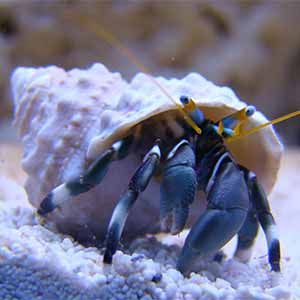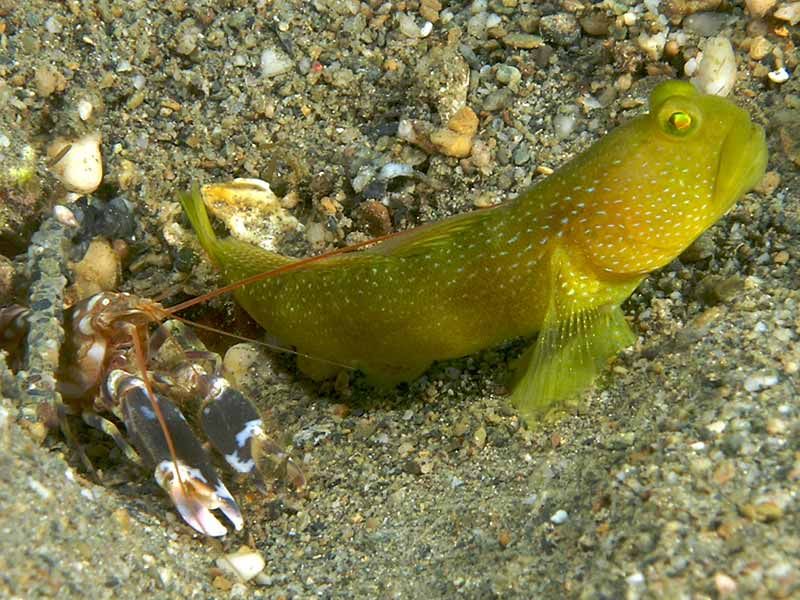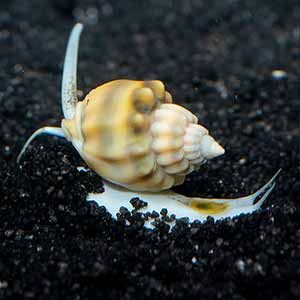Aquariums can become filthy if we are not keeping to a strict and consistent maintenance schedule. One of the filthiest areas in the aquarium is your sand bed, where all the waste slowly accumulates over time. In order to have a properly clean aquarium, it is important to adequately clean aquarium sand, but how does one do that? Learn how to clean aquarium sand in this article while discussing how you keep maintaining your clean aquarium sand for longer periods.
Why should you clean your aquarium sand?
The obvious answer is because it becomes filthy. All the waste from your fish, food, and other nasties in the aquarium has only so many places where they can go. The majority of the waste that isn’t picked up by skimmers and other cleaning devices will more than likely float to the bottom of your aquarium.
The most obvious benefit is that your sand will look much better, but your fish will thank you too. Waste that isn’t properly taken care of will begin to mess with the water quality and affect fish health, so make sure you are attending to your substrate cleaning. Plus, the cleaned sand will look much better in your tank.
How do you clean fish tank sand before use?
The easiest way to clean fish tank sand before use is to use large 5-gallon or 10-gallon buckets and place the substrate inside. Then simply rinse the aquarium sand until the water runs clear. Depending on the sand, the dirty water might take some time to dissipate, but it’ll happen.
How to clean aquarium sand WITH a siphon
The easiest way to clean fine sand is to use a siphon or vacuum to suck up any unwanted debris. First, you will want to disturb the sand a little to try and get the feces and other compounds to the top of the pile. It will be much easier to vacuum it up this way. Of course, this comes with its own challenges, as you might imagine.
The fine sand can be sucked up into the siphon or vacuum if you aren’t careful. It is important that you keep the end of the tube hovering above the fine sand. You want it low enough that you are able to collect the debris but high enough so that you aren’t sucking up sand. The last thing you want is to have to replace your substrate every time you need to clean your fish tank. You should also check out your filter before you checkout for the day. All that stirring of the sand might have sped up the filter’s collection, and you might need to clean that out too.
Depending on the fish species that you are keeping, you might want to be cautious where you are thrusting the vacuum hose. You don’t want to stress your fish out as you clean or accidentally hurt them,
How to clean aquarium sand WITHOUT a siphon?
Cleaning your aquarium sand without a vacuum will still require some equipment. You will need to find a pressure kit or a turkey baster. The same rules apply, just stir up the sand and do your best to suck up all the dirt that is present. The biggest benefit to this technique is that you more than likely have a lot more control and can reach hard-to-reach places. Plus, you don’t run the risk of losing your sand but make sure your dirty water is being deposited in the sink drain to avoid stinking up your office!
How to get rid of a sand cloud in the aquarium
Sand clouds are annoying for any hobbyist since they make their once immaculate fish tank look less than pleasing.
The best way to remove a sand cloud is to avoid the problem in the first place. Make sure you are completing your water changes and washing substrate before you add it to your aquarium.
How to remove sand from an aquarium?
While you may have your own reasons for wanting to remove the sand from your fish tank, if you are removing it to simply clean it, you might reconsider. There is debate online whether removing the sand to clean it is actually beneficial for your aquarium in the long run as there are bacteria that set up shop in the sand bed that help with the overall health of your aquarium. It might be a better choice to try a different method.
However, if you would like to proceed, here is what you will need to do to successfully remove the sand from the aquarium.
- Prepare your fish. They still need to be moved to a different aquarium temporarily, so ensure they will have someplace comfortable to rest their fins while you work.
- Plan ahead. Try to have the removal day on a day that isn’t right after a filter change day. Let the good organisms build up, and make sure to top off your aquarium before you start removing the substrate.
- Siphon water from your main tank to another holding tank which will hold your live rock and plants. It is important to preserve the life of bacteria that are living on the live rock.
- Move all your live rock, live plants, and fish.
- Then begin to scoop out all the substrate in the tank. Once all the substrate is removed from the tank, you can begin siphoning up any leftover gunk that might be left.
- Add new substrate. Or you can simply run rinse the substrate until it runs clear and replace it in the tank, whichever you are more comfortable doing.
- Begin to reintroduce your live rock, plants, and fish
How to keep aquarium sand clean
The best way to keep your aquarium sand clean is to ensure that you are sticking to a consistent maintenance routine. Make sure your filters are being cleaned, and you are performing your water changes as well as doing routine cleanings of the sand as we have already described every 2-4 weeks.
You might also consider certain species to join your team of sand sifters. Sand sifters are fish and other creatures that will move around in your substrate, which stirs it up like you might do yourself when you try to vacuum your sand. The sifting of the sand helps the dirt get picked up by other fish, equipment, and water changes. Really great way to save some manual labor on your part as sand sifts can delay the need to clean the sand directly. However, you will still need to ensure that you are cleaning the aquarium sand semi-regularly still. Here are a few fish species and other creatures that might make a good addition to your sand sifting squad.

Hermit crabs
Smaller hermit crabs will spend all their time searching through the sand, looking for food. They make a great addition to the sand sifting squad.

Gobies
Some gobies will search through the sand looking for food. However, not all gobies do this, so it is important to research the species before purchasing. For instance, the Yellow Watchman Goby pictured here is a good choice.

Snails
You want to be careful what kind of snails you purchase. Some will want to avoid the sand, which is the opposite of what we want. The Nassarius Snail is a good example of a reef-safe sand sifting snail.
How to clean algae off aquarium sand
The algae will be picked up with other dirt when you clean your sand with your preferred method to clean. However, if you want to ensure that you are getting the most bang for your buck, then you should scrape the algae off the sides of your tank first. Clean around your tank like normal and leave the sand bed for last. The algae that aren’t picked up by your scraper will slowly fall to the ground, where you can siphon it up.
How to keep sand out of an aquarium filter
If sand gets into your filter, there is a good chance it can clog, which isn’t an immediate problem, but your water quality will begin to suffer. If you don’t realize your filter is clogged fast enough, the health of your fish will begin to suffer too. If the clog is severe enough, you might risk a mechanical failure and have to replace some parts or buy a new unit. That is a lot of hassle that no one has time for, so the best thing to do would be to prevent that from happening in the first place, right? Well, how do you stop sand from entering the filter?
Filter placement
The easiest thing you can do for yourself is to try to place the filter away from your sand bed. That will decrease the chance that sand can reach the filter.
Sponge filter
If you have a spare sponge floating around, you can cut one to the size of the intake tube and slot it in there. The sponge should allow for fish waste to be collected while preventing the sand from getting in. Pay attention to the state of the sponge though since it will be acting as a filter, it will become full at some point and will require replacing.
Turn it off
Finally, remember to turn off our filter when you are cleaning your substrate or doing anything where the substrate might become disturbed. That will definitely prevent anything from immediately getting inside your filter. However, make sure to turn it back on when you have cleaned your aquarium!
Final thoughts
Now that you know how to clean aquarium sand, your tank’s sand should be perfectly presentable. Just make sure that you clean the sand on a consistent schedule and take the right precautions while you clean. The filter is one of the biggest items to remember to turn off temporarily and to turn it back on as soon as your aquarium sand is cleaned. Your fish will appreciate the clean sand bed and clean water.
